Check Valves
Products Portfolio
By Type
By Design
By Material
By Actuator
By Industries
- Slurry Valves
- Water Treatment & Wastewater Valves
- Natural Gas Valve
- Chemical&Petrochemical
- Geothermal Energy
- Gas Process & Refinery
- Pulp and Paper Valves
- Mining Valves
Assessories
Check Valves
We at SIO produce check valves made from materials with the highest quality. Commonly known as one-way valves, check valves are made primarily to block backflow and to protect compressors and pumps. They are common in various industries and applications including natural gas, mining, and municipal water.
Their main parts include a cover, body, seat ring, disk, and a hinge pin. They come in different types, like the swing type, lift type, dual plate type, and the stop check valve.
The fluid pressure that goes through the pipeline will open the valve. Meanwhile, any backflow will shut the valve. Check valves will promote smooth flow and will shut automatically as pressure declines.
SIO will assure you that we will both produce and configure your check valves in the most efficient manner.
Check valves Manufacturer
SIO manufactures quality check valves, also known as a one-way valve, clack valve, and non-return valve (NRV). It is one of the most commonly used valves in various industrial applications. The purpose of a check valve is to prevent flow from going back into the system (backflow).
The main advantage of a check valve is its operation is self-automated. The mechanism of this valve prevents damage to other equipment, contamination, and other potential problems on the upstream line. A check valve is found in an array of industrial applications, including injection lines, boilers, cooling towers, water and wastewater treatment facilities, washdown systems, and so much more.
You can also buy a customized electrical check valve. Let’s discuss all the different types of check valves produced by SIO.
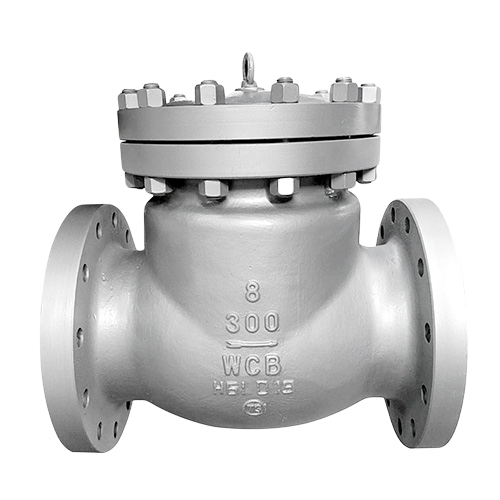
Check Valves Features
Design and flange end
SIO check valves’ basic design complies with ANSI B16.34/ API 603. The flange end complies with ASME/ANSI B16.5.
Testing standard
All SIO check valves are tested and inspected according to the industrial standards- ANSI B16.34/ API 598
Temperature tolerance
SIO high temperature check valve has great temperature tolerance. It can bear as high as 425ºC and can also work below 0ºC.
Material
Check valves from SIO are made from durable and corrosion-resistant materials such as bronze, stainless steel, cast steel, etc.
Benefits of using Check Valves/ why use Check Valves
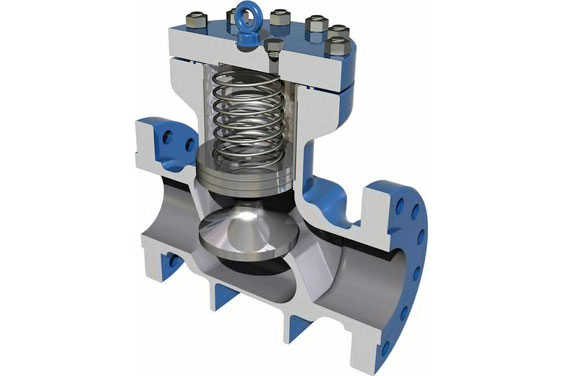
Backflow prevention
Check valves are generally used in industries to prevent backflow. Because of their ability to be used in both horizontal and vertical directions, they are suitable for most applications.
Protection
Check valves to prevent pumps and compressors from being damaged by backflow. It also prevents water hammers. It happens if an open valve is suddenly closed, the water slams into it. As a result, the pump suddenly stops and reverses the flow back to the pump.
Energy efficient
Check valves do not require power to operate, however, they can be used with an automatic actuator making them an electrical check valve.
Standard and specification of Check Valves
Non-slamming Features
When it comes to non-slamming features, there are two things to consider. In the first step, you must determine how long a check valve will take to close. As a next step, you must consider how the disc shifts from an open position to a closed one.
Head Loss Features
Each check valve causes a head loss. An obstruction to a process fluid and the presence of fluid viscosity can cause a drop in head loss. As a result, pumps will use more energy. To reduce head loss, choose the right design for the check valve.
Common Check Valve Applications
Industrial Processes
Pumps
Pipelines
Oil and Gas Industries
Chemical Processing and Biopharm Industries
Food and Beverage Industries
Marine Industries
Wastewater Treatment Plants
Check valve factory
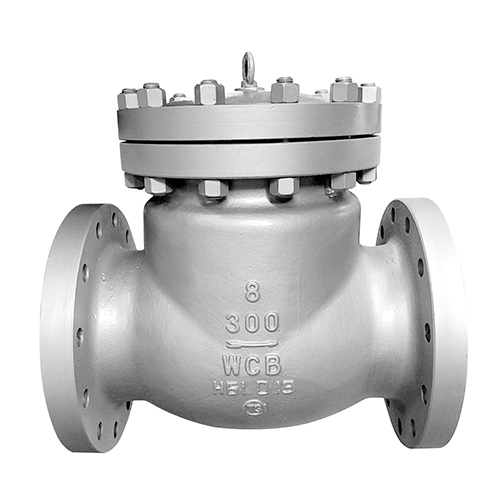
SIO is the best check valves manufacturer in China because it does not compromise the quality of the products. We have retained our customers’ trust for more than two decades and will keep continuing that.
The machines that we use are high-precision automated mechanisms, such as machining centers, CNC lathes, CNC mills, and other processing equipment, which achieve the highest levels of synchronization currently available.
We ship worldwide as well, so if you want to try our services from any corner of the world, we are there at your service.
What Are the Different Types of Check Valves?
Check Valves by Materials
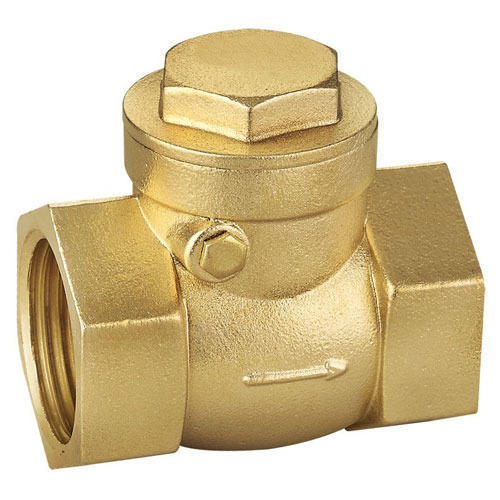
Brass Check Valve
The Brass Check Valve is highly corrosion resistant. As a result, it can handle different corrosive fluids as well as chemicals. This type of check valve is also well suited for high temperatures due to its excellent ductility.
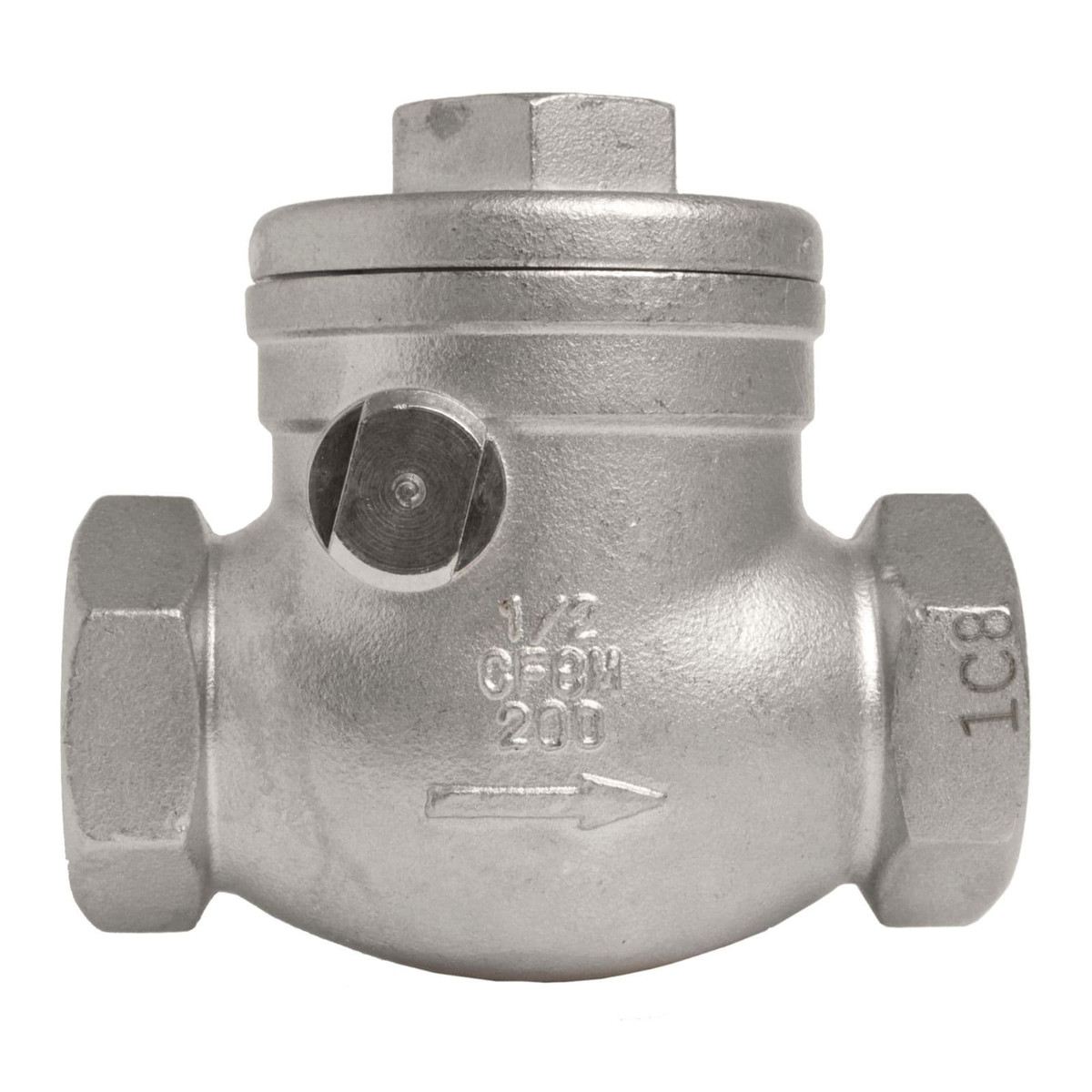
Stainless Steel Check Valve
Stainless steel check valves are durable and designed to work under different conditions. This allows it to prevent backflow in aggressive and corrosive media. The material is also commonly used in applications involving high temperatures and pressures.
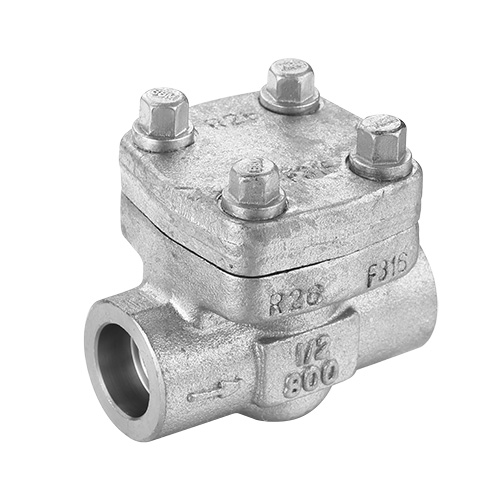
Forged Steel Check Valve
A forged check valve is ideal for applications with temperatures and high pressures. This helps improve the valve's overall strength. Another advantage of the forging of steel is that it produces a check valve with a reduced wall thickness.
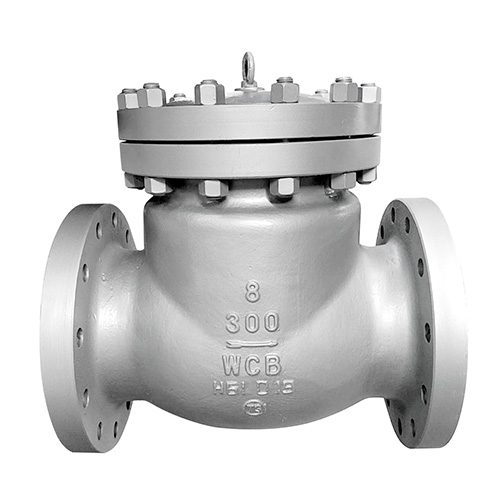
Cast Steel Check Valve
Specifically, a cast steel check valve is one that is made from cast steel. Among the benefits of casting steel is its ability to produce check valves with unique shapes and sizes.
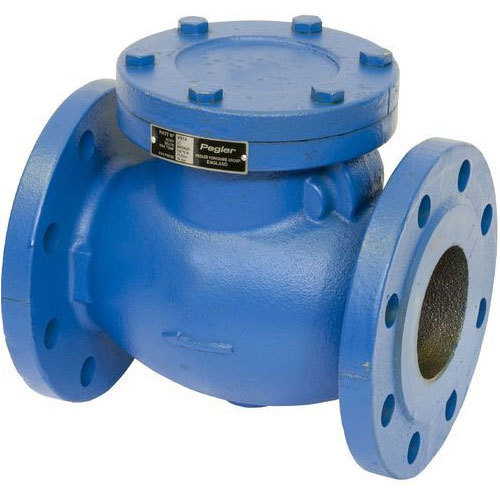
Cast Iron Check Valve
Cast iron check valves are extremely wear-resistant and vibration dampening. Their corrosion resistance is also excellent. These features make this type of check valve ideal for use in a variety of industrial applications, such as water lines, sewage systems, and utility systems.
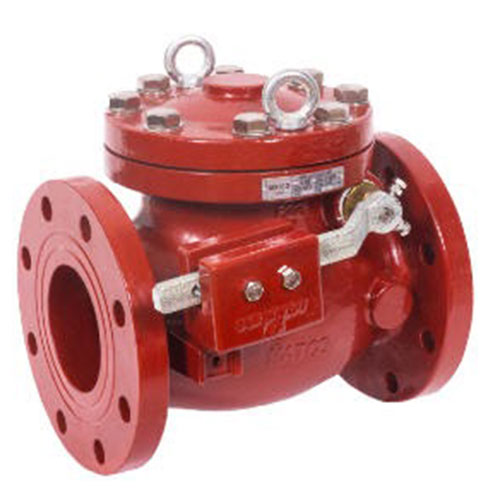
Ductile Iron Check Valve
The ductility of ductile iron is what makes it resistant to breaking when flexed. It is capable of withstanding high temperatures as well as high pressure. Check valves made from ductile iron are robust, tough, and have a high degree of heat resistance.
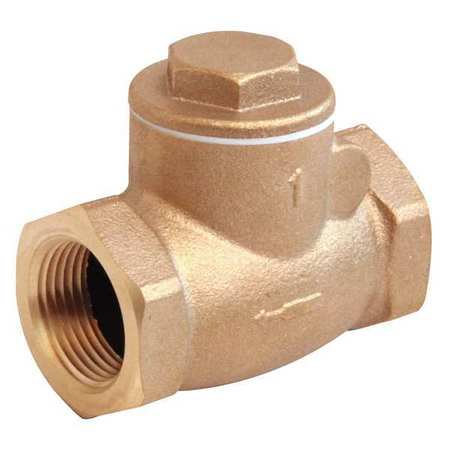
Bronze Check Valve
Bronze check valves are made from bronze. In addition to their enhanced strength, bronze check valves are also very machinable, corrosion-resistant, and wear-resistant. This type of check valve is commonly used in services with low and medium pressures.
Check Valves by Disc Design
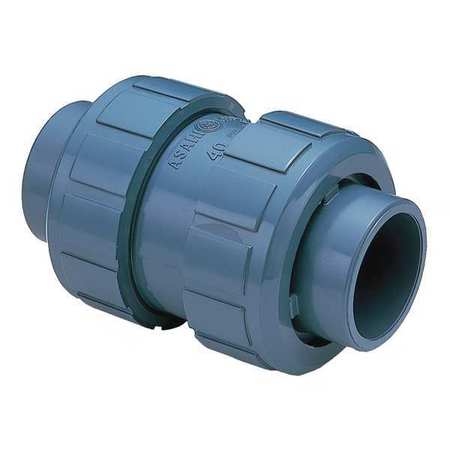
Ball Check Valve
Due to its small size and simplicity, ball check valve is relatively low-cost and doesn't require as much maintenance. Valve bodies are made of forged steel, cast steel, or other materials. This ensures their performance for an extended time.

Swing Check Valve / Butterfly Check Valve
Swing check valves, also known as butterfly check valves, are used to prevent reverse flow or permit forward flow. To control media flow, it consists of a movable disc attached to a hinge or trunnion.
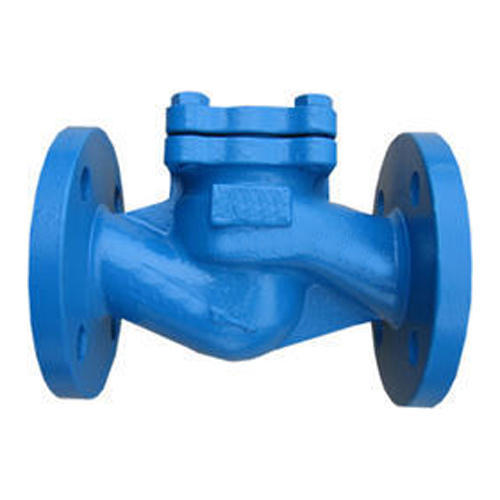
Lift Check Valve / Globe Check Valve
Lift check valves have a similar seat design with globe valve.They are suitable for applications where high pressures and high velocities are present. It is used in petrochemical, chemical treatment, agricultural, food and beverage processing, and so on.
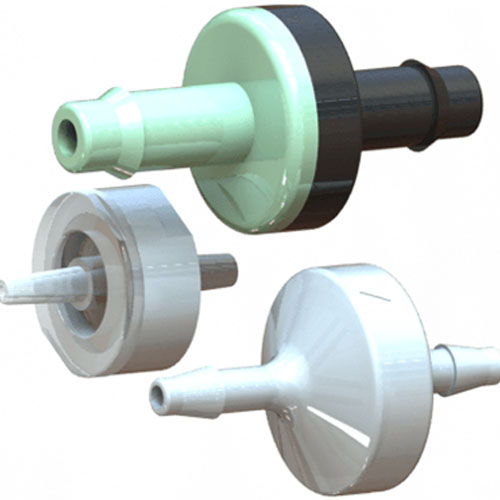
Diaphragm Check Valve
Diaphragm check valves contain either a rubber diaphragm or a self-centering disc. A certain amount of upstream pressure should exceed downstream pressure in this valve. Pressure differential enables the check valve to open and allow flow.
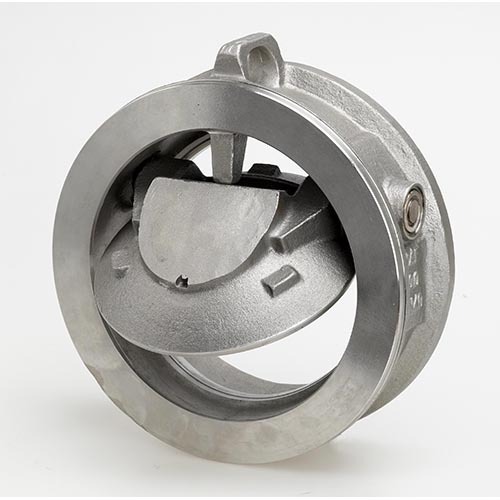
Tilting Disc Check Valve
Tilting disc check valves consist of a disc with a pivot point located in their center. Pump protection is ideal with a tilting disc check valve since it has a quick-acting closure. It is used for gas and liquid handling applications.
Check Valves by Media Type
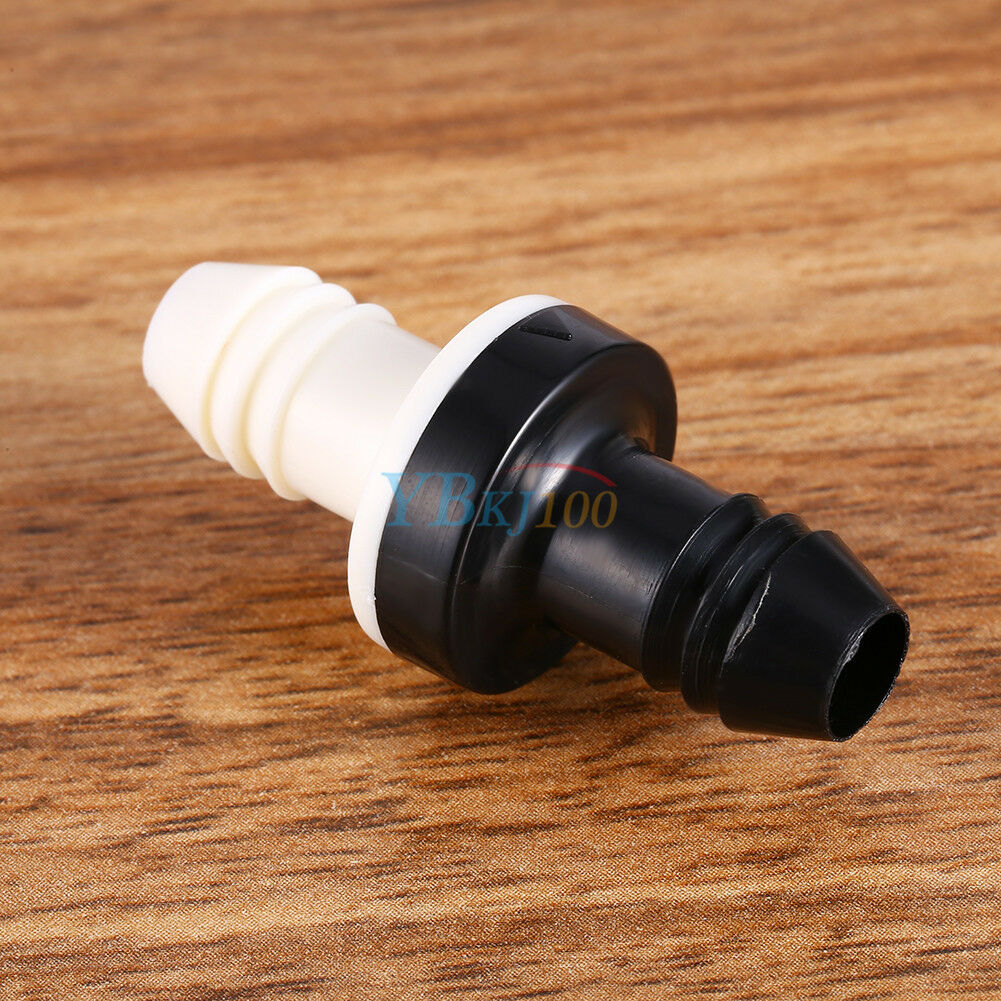
Liquid Check Valve
Liquid check valves are intended to handle different types of liquids. Its performance depends on factors such as velocity, density, and viscosity. The WOG symbol on a check valve indicates that it can handle water, oil, and gas.

Gas Check Valve
It is specifically designed for use in gas transmission applications such as compressor discharge. Gas check valves are also used for hydraulic lines, compressor intake and outlet, metering pumps, airlines, pressure letdown, and pump discharge, among other applications.
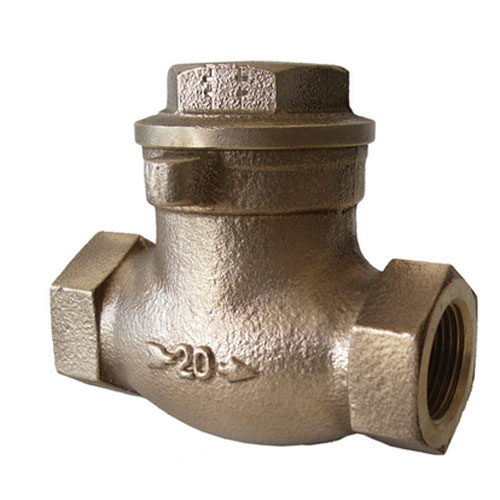
Steam Check Valve
The steam check valve is used in industrial and chemical processes that involve steam and condensate. Many industrial processes rely on steam. However, it produces condensate that must be immediately removed from the steam line. The valve prevents reverse flow and ensures that the condensate is removed completely.
Check Valves by Application
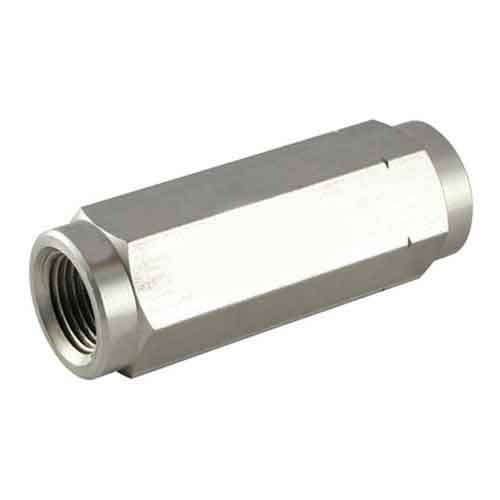
High-pressure Check Valve
High-pressure check valves are designed to handle demanding industrial applications. This check valve can withstand high pressure, high temperatures and corrosive media. It is used in hydrocarbon processing, natural gas plants, as well as wastewater treatment.

High temperature Check Valve
High temperature check valves are designed to handle environments up to 425°C. They can also handle temperatures below 0°C. A high-temperature check valve is commonly used in steam plants, process plants, and boiler plants.
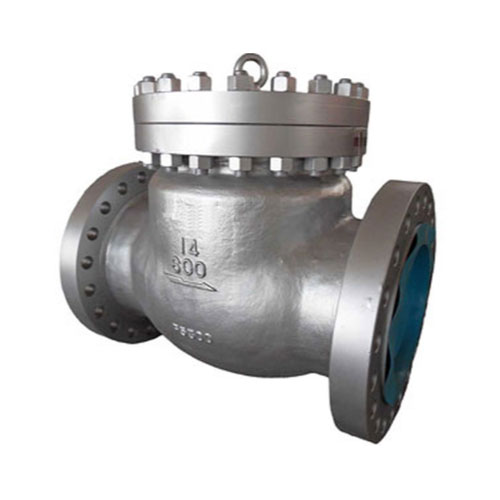
Cryogenic Check Valve
Cryogenic check valves are designed to withstand extremely cold temperatures, up to -196°C. To handle cryogenic fuels, such as liquid oxygen and liquid hydrogen, cryogenic check valves are widely used. In addition, it is used in liquefied gases.
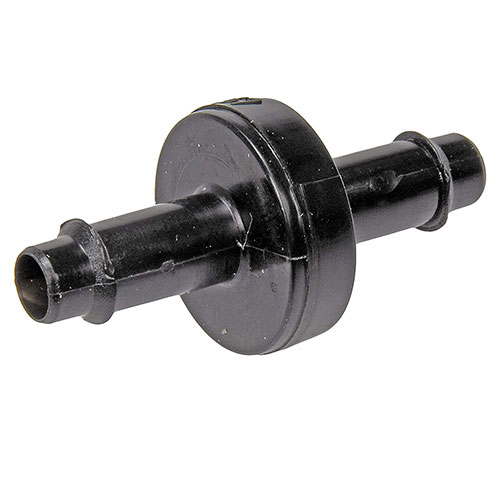
Vacuum Check Valve
The vacuum check valve controls vacuum levels by providing a tight seal in a venturi vacuum pump. There should be no cracking pressure greater than 1" Hg on an ideal vacuum check valve. Consequently, the valve can maintain a higher vacuum level.
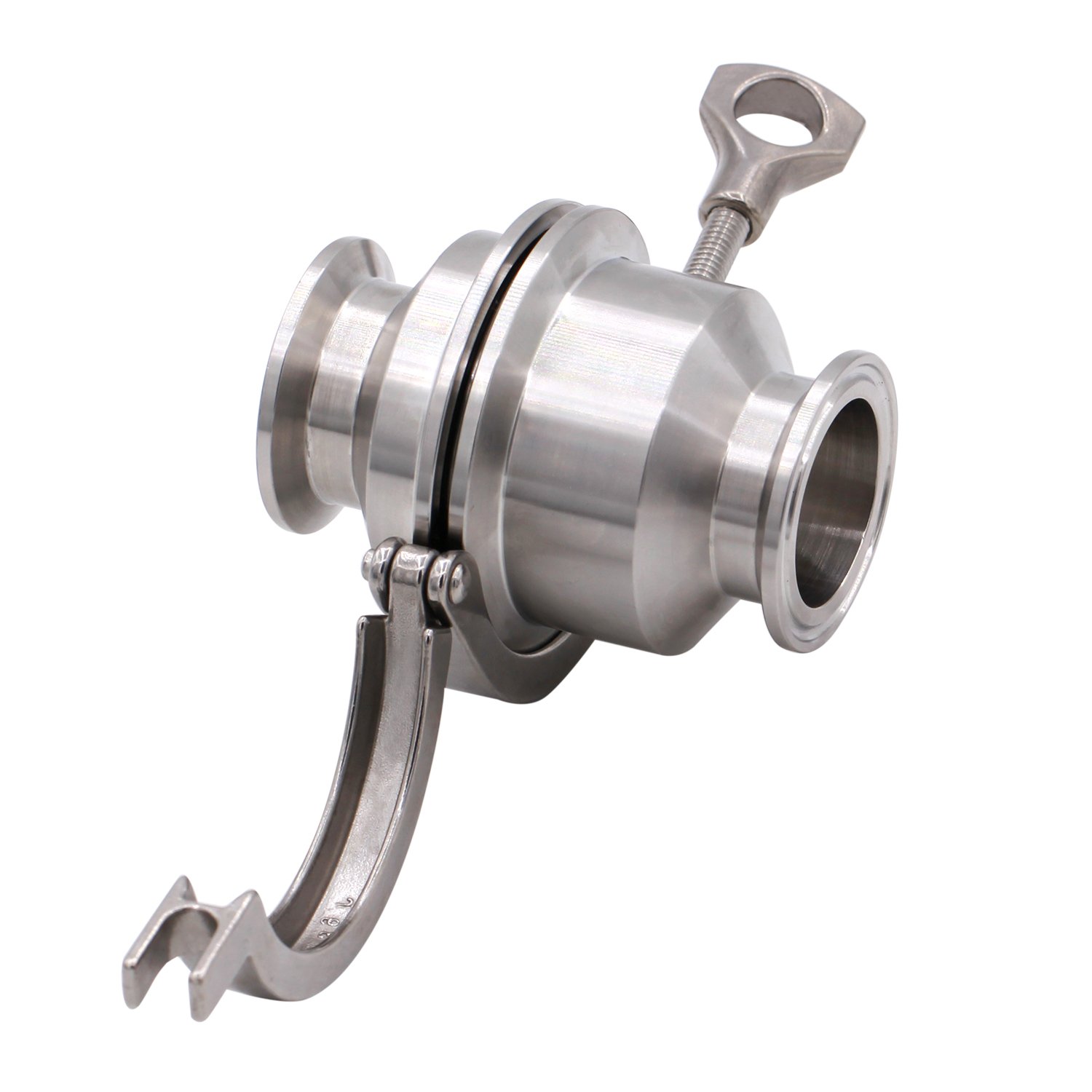
Sanitary Check Valve
Sanitary check valves are specifically designed for pharmaceutical applications and are also called chemical check valves. The main purpose of this check valve is to prevent reverse flow and cross-contamination.
Check Valves by Connection
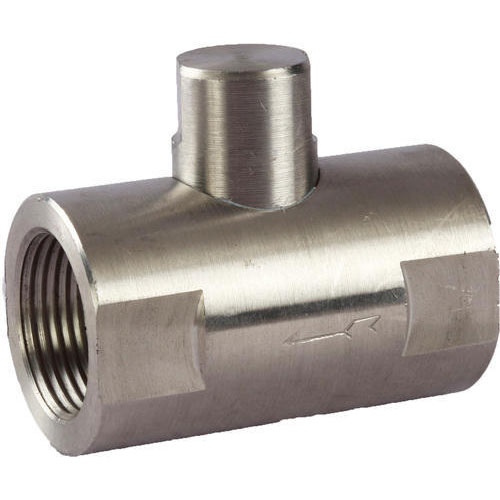
Socket Weld Check Valve
A socket weld check valve is suitable for high pressures and temperatures applications, ensuring leak-proof sealing under even the most extreme conditions. They are used in industries like oil and gas, pulp and paper, and chemicals.
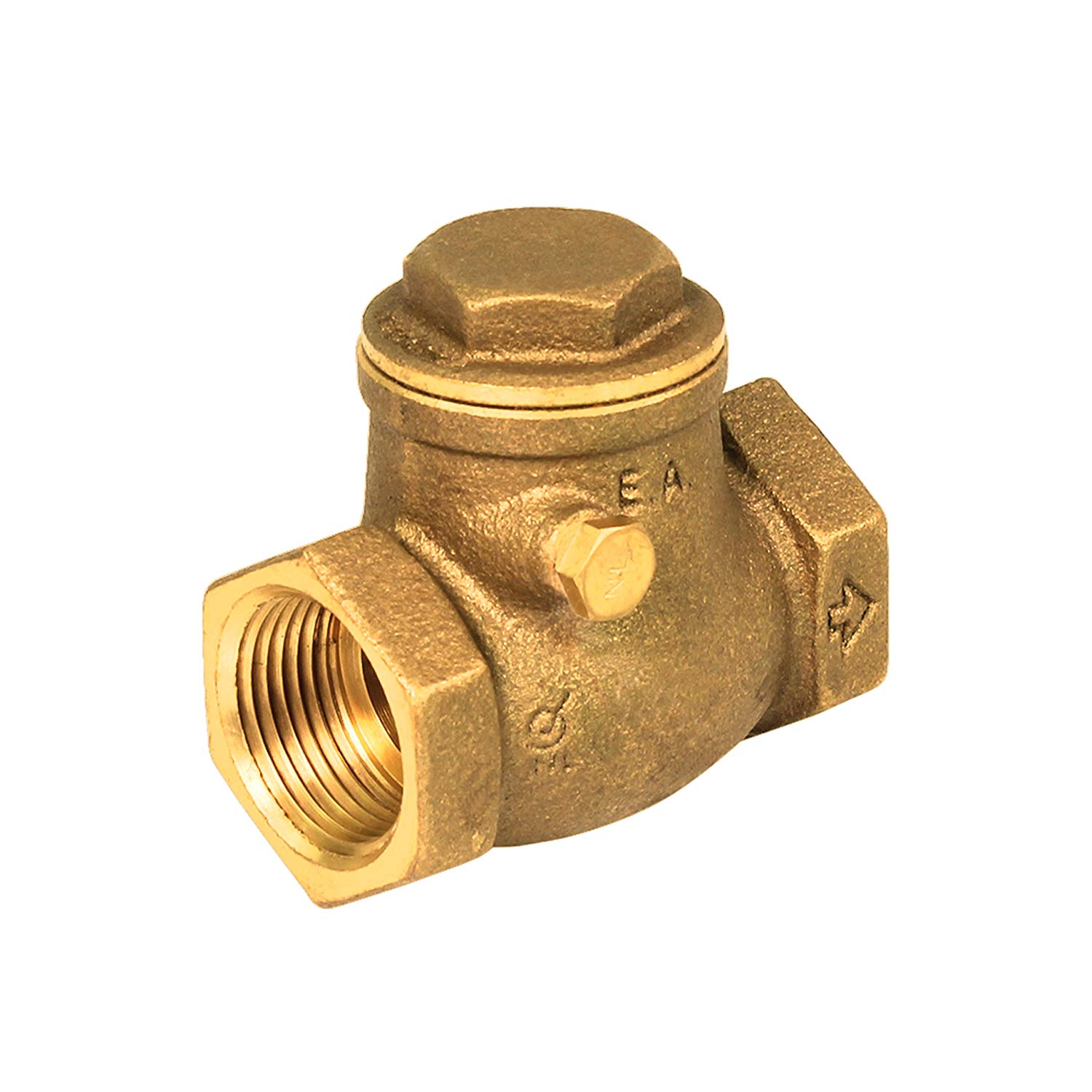
Threaded Check Valve
A threaded check valve is an industrial check valve that has threaded connections on the ends. Generally, threaded connections are used to seal tightly at low pressures and temperatures. It is also used in applications with minimal vibrations.
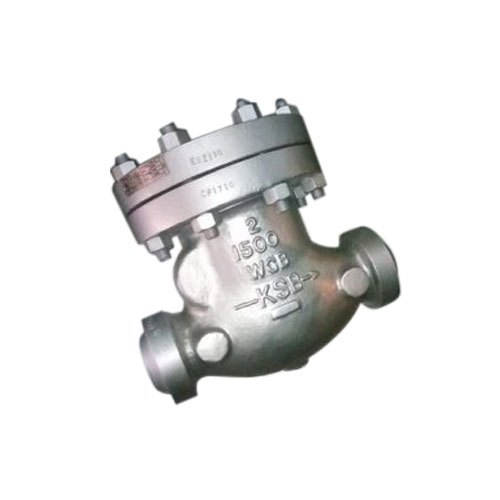
Butt Weld Check Valve
Steel check valves are commonly equipped with this connection because of their strength. A butt weld check valve is ideal for applications involving extreme pressures and temperatures.

Compression Fitting Check Valve
Compression fitting check valves are generally used on steel and copper pipes. This valve is used in low-pressure applications or when disassembly of the pipeline is not required frequently.
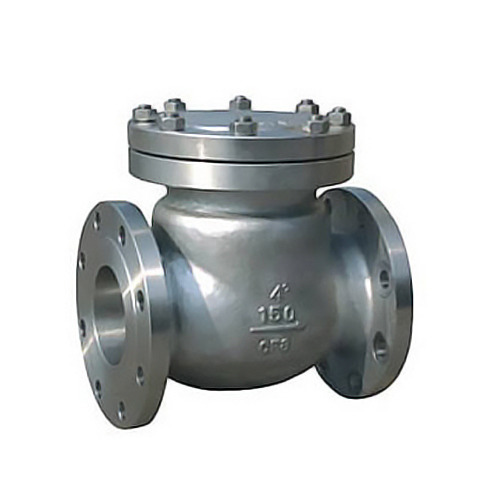
Flanged End Check Valve
Flanged end check valves are made with flanges on their ends. Flanged connections are the easiest type of connection to install and remove from a pipe. Furthermore, it is the most common connection for valves, especially those which are frequently removed and reinstalled.
Check Valves by Body Design
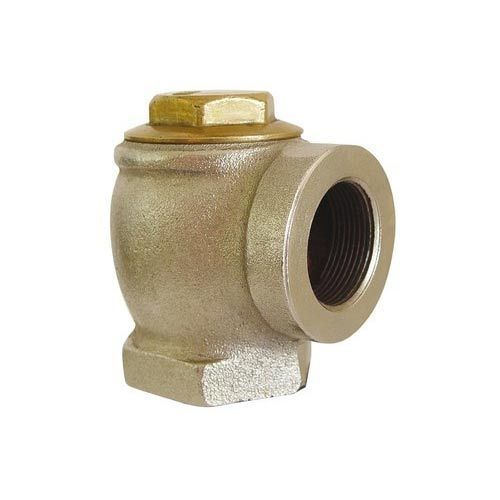
Angle Check Valve
The angle check valve allows viscous fluids, such as slurry, to pass through it easily. Additionally, it helps to prevent fluid cavitation and flashing from damaging the check valve. Angle check valves are commonly used in high temp application.
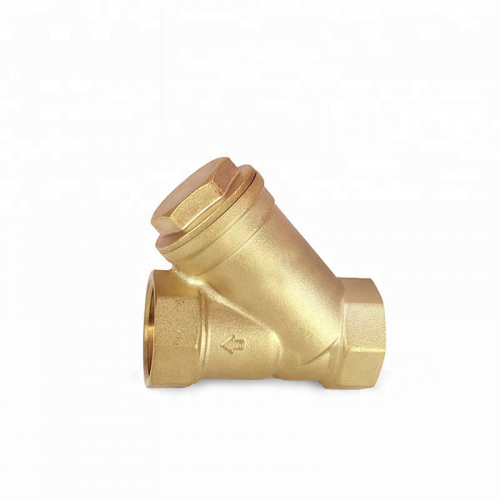
Wye Check Valve / Y-Check Valve
Commonly referred to as Y-check valves, they allow one-way flow in compressed air or liquid systems. It can be used in a variety of media, including seawater, condensate, fuel oil, boiler feedwater, freshwater, cargo oil, lubricating oil, flammable, non-flammable hydraulic fluid, etc.
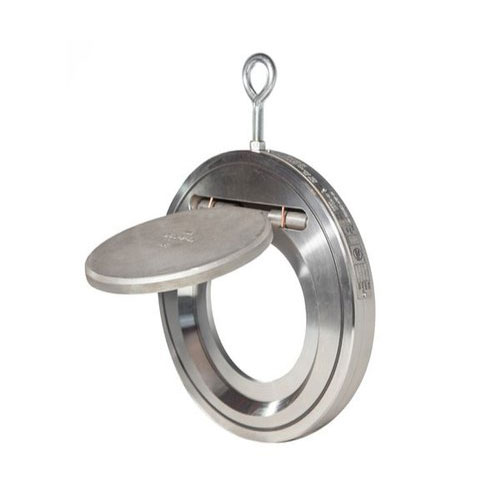
Wafer Check Valve / Dual-plate Check Valve
The slim design of a wafer check valve significantly reduces the chances of clogging. It is used in chemical processing, mining, power plants, bleach plants, tank inlets and outlets, and water treatment plants.
Check Valve Manufacturer
A check valve is also known as a one-way valve, clack valve, and non-return valve (NRV). It is one of the most commonly used valves in various industrial applications. The primary purpose of a check valve is to prevent flow from going back into the system (backflow).
The main advantage of a check valve is its operation is self-automated. This means that if a plant or facility loses power, a check valve will continue to function. The mechanism of this valve prevents damage to other equipment, contamination, and other potential problems on the upstream line.
If the check valve is not positioned properly, pipes, pumps, and other equipment may become damaged. Fluids may also go into areas where they shouldn’t be. This could cause contamination and affect the overall integrity of the process medium.
A check valve depends on the process flow to function. As the medium goes through the process line in the specified direction, the disc opens. The disc of a check valve can be a flap or ball, depending on the design of the valve. Meanwhile, when the flow reverses or decreases, the check valve closes right away.

A check valve is found in an array of industrial applications, including injection lines, boilers, cooling towers, water and wastewater treatment facilities, washdown systems, and so much more.
How to Choose the Right Check Valves for Your
Industrial Applications
Check valves are designed to protect compressors, pumps, and other types of equipment. This is why it is utterly important that you choose the right check valve for your application. Before selecting, there are several factors that you must consider. This is to ensure that you have made the right decision.
With non-slamming features, there are two factors to look into. First, you must determine the time needed for a check valve to close. Next, you must consider the manner the disc shifts from an open to a closed position.
- Factors That Affect Quick Closure
• Reverse flow or velocity
There are some instances when it is not recommended to allow the reverse flow to close the check valve. Since doing so could result to slamming. You must avoid this situation if surges and slamming are of main concern.• Disc stroke length
This refers to the travel time of the disc to achieve a closed position. Having a shorter stroke means the check valve will close faster.• Mechanical assistance
Using levers, springs, and weights can help a check valve to close rapidly. Swing check valves have combined these types of mechanical assistance successfully in several applications. - Factors That Affect Slow Closure
A check valve made for closing slowly allows build-up of velocity for reverse flow. The speed of a check valve closing can be measured and regulated to prevent surges and slamming. Several ways to regulate the velocity of a slow-closing check valve are power actuators, oil accumulators, dashpots, and cushions.
Each check valve creates head loss. Head loss refers to a drop in pressure head as a result of fluid viscosity and obstructions to a process fluid. It is an added expense as pumps will have higher power consumption. Choosing the proper design for a check valve is an effective way to decrease head loss. The design aspects that affect the extent of head loss are:
- Design of the disc
- Body geometry
- Interaction between the flow and disc
- Total area for media flow through the valve body
- Disc Design of a Check Valve
The location of the disc is a determining factor. Head loss is created if the disc is situated within the process flow. The non-slamming features of a check valve can be enhanced through the use of mechanical assistance, such as springs, to achieve rapid closure. However, there will be increased head loss. In this design, the disc is forced into the flow, creating turbulence.
If head loss and slamming are an issue, a swing-type check valve is recommended. Rather than being forced against it, a swing-type lets the disc move on top of the flow.
- Body Design of a Check Valve
A body design that creates turbulence will also create head loss. The design of a check valve must prevent huge changes in the direction of flow. This can be achieved through having a body that contains a smooth outline. This provides the process flow a smooth pathway.
When purchasing industrial valves, the cost should always be considered. Some of the questions that you may want to ask:
“Is the initial price reasonable?”
“Are the costs for energy consumption high as a result of head loss?”
Check valves with lower head loss are usually more expensive. However, these valves will eventually pay for themselves. Keep in mind that saving a bit on the initial purchase price could end up in spending more long-term. The main factors you must consider when purchasing check valves are valve location, costs of parts and labor, and system downtime.
When choosing a check valve, you need to compromise on some things. You must weigh the importance of each selection factor. This is to make sure that you make an informed decision and that you have chosen the right check valve for your application.
When you have made a decision, take the time to look into different manufacturers. Check their designs so you can see which check valve is the best for your needs.
What Are the Different Types of Check Valves?
Check Valve Types by Materials

Source: Indiamart
Brass Check Valve
A brass check valve is a check valve made from brass, a durable material that is an alloy of zinc and copper. Due to its strength, brass is an excellent choice for check valves used in demanding applications. It has high resistance to corrosion and does not rust. This makes it suitable for different properties of flow, such as certain chemicals and fluids with high corrosive properties.
Brass also has excellent ductility, making this check valve type well-fitted for high temperatures. It does not break easily compared to other materials. Brass is also easy to bend and shape, so it is suitable when customizing a check valve.
Stainless Steel Check Valve
A stainless steel check valve is a durable check valve designed to withstand different conditions in industrial applications. Using stainless steel eliminates the risk of sticking, making this type of check valve suitable for handling oil, gas, and water.
Due to its enhanced strength, a stainless steel check valve is used to prevent backflow in corrosive and aggressive media flow. It is also commonly used in high pressure and high temperature applications.
Aside from durability and corrosion resistance, a stainless steel check valve ensures there is zero leakage. This is an essential feature as it prevents anything toxic from escaping and potentially harming anyone working closely with the system.

Source: Direct Material

Forged Steel Check Valve
A forged steel check valve is a check valve produced through the process of forging. This process involves forming billets while they are still in their solid state after heating. Forging dies are utilized to compress the billets to produce the needed shapes and dimensions.
After forging, the components of a check valve will gain enhanced strength. This makes a forged check valve ideal for applications with high pressures and temperatures. Apart from increased durability, the grain structure of these components are also refined. This helps improve the overall strength of the check valve.
Another advantage of forging steel is it makes a check valve with lesser wall thickness. This design helps in reducing the risks of thermal fatigue during the operation of the check valve. This also allows the check valve to cooled and heated faster. AS a result, this check valve can well handle the different pressures of a system that continually cycles through phase-down and start-up processes.
Cast Steel Check Valve
A cast steel check valve is a type of check valve made from casting steel. This method involves creating valve components from the liquid form of steel. The metal is melted and poured into the specified forms. After the liquid has cooled down and solidified, the metal is taken out from the mold. The extra metal are removed through shot blasting and grinding.
A major benefit of casting steel is it can produce check valves with unique sizes and shapes. This makes it an ideal solution for check valves produced in small quantities and for those that have specific requirements.


Source: Indiamart
Cast Iron Check Valve
A cast iron check valve is made from cast iron, which is also termed as gray iron. This type of metal is an alloy of iron, carbon, and silicone. Cast iron is produced by remelting iron and is usually combined with scrap iron. However, there are some instances where it is mixed with steel instead.
Once the iron is melted, it will proceed to casting. Casting is the method of pouring molten iron into a specified mold. Thus, providing the shape of the check valve. After casting iron, the mold will be given time to solidify.
A cast iron check valve has excellent wear resistance and vibration damping. It also has a high resistance to corrosion. Because of these features this type of check valve is commonly used in water lines, sewers, and utility systems in a variety of industrial applications.
Ductile Iron Check Valve
A ductile iron check valve is made from a more advanced alloy of iron with the combination of a certain graphite. Ductile iron has great ductility, which means it does not break easily when flexed. It can handle high temperature and pressure.
A check valve made from ductile iron is robust, tough, and has a high resistance to heat. It also has excellent corrosion-resistance, yield strength, and tensile strength. While a ductile iron check valve is quite expensive, it is strong, reliable, and can endure demanding applications.

Source: Walmart
Bronze Check Valve
A bronze check valve is made from bronze, which is mainly made of copper. It also contains lead, zinc, and tin. Other additives may be used, such as aluminum, silicone, arsenic, phosphorus, and manganese. The adding of these materials make bronze stronger compared to using copper alone. Moreover, the composition of bronze makes a check valve malleable, meaning that the valve will not break easily when bent.
Due to its added strength, a bronze check valve has excellent machinability, corrosion resistance, and wear resistance. This type of check valve is widely used in services that have low and medium pressures.
Check Valve Types by Disc Design

Source: Zoro
Ball Check Valve
A ball check valve is equipped with a movable ball that acts as the closing mechanism of the valve. This ball, also known as the disc, is found inside the check valve and goes up and down to control the flow. The valve seat is designed to fit the disc. The valve chamber is shaped conically help direct the disc into the seat to provide a tight sealing.
Since it is generally small and simple, a ball check valve is usually inexpensive and requires less maintenance. The valve body is made from a durable material, such as forged steel and cast steel. This is to ensure it functions optimally for a long time. The ball is typically made from metal; however, other materials can also be used depending on the application. For instance, the ball may be made from polyurethane so it can handle abrasive media.
This type of check valve is self-cleaning. The rotation of the ball eliminates risk of particles getting stuck inside the valve seat. A ball check valve is often found in pump stations that require minimal maintenance.
Swing Check Valve / Butterfly Check Valve
A swing check valve, also known as a butterfly check valve, is used either to permit forward flow or prevent reverse flow. It is made of a movable disc that swings on a trunnion or hinge to control media flow.
The seat has a cross-section opening and can either be at a certain angle or perpendicular to the center between the two openings or ports. A swing check valve comes in various sizes. However, it is usually larger compared to other check valves.
A swing check valve is usually recommended for applications that employ gate valves. This is due to the low pressure drop through the check valve. The body is available in either a straight design or Y-pattern. Either way, the hinge and disc are suspended from the valve body through a hinge pin.

Source: Indiamart
For its seating, this type of check valve either uses a metal seat-to-composition disc or a metal-to-metal type. A composition disc is typically used when applications require a positive shut-off or when handling dirty fluids and other particles that might be in the flow. It is also used when noise level is a concern.
The closing mechanism of a swing check valve relies on reverse flow and the weight of the disc (gravity). The pivot point of this check valve is beyond the perimeters of the disc. This means that there is a greater chance of reverse flow when there is increased pressure head. For the check valve to shut-off completely, the disc must travel in a 90-degree angle to the valve seat.

Source: Indiamart
Lift Check Valve / Globe Check Valve
A lift check valve is also called a globe check valve as it has a similar seat design with a typical globe valve. It has a disc, also known as a lift, that is either a ball or piston.
Flow that enters a lift check valve must always go through under the seat. The seat, which relies on the pressure of the upstream flow, guides the ball or piston as it goes up as the flow goes in. When the flow reverses or stops, the ball or piston closes as it is forced into the valve seat by gravity and backflow.
A lift check valve is well-suited for applications that handle flows with high pressure and high velocity. It is recommended for both vertical and horizontal pipelines with upstream flow.
This type of check valve is used for various flow materials, such as chemical vapors, steam, air, water, etc. It can be found in an array of industries, including petrochemical, agriculture, food and beverage, chemical processing, water treatment, and medical applications.
Diaphragm Check Valve
A diaphragm check valve is a check valve that contains either a self-centering disc or a flexible rubber diaphragm. Both of these operate as the closing mechanism of the valve. How a diaphragm check valve functions is similar to a typical check valve. It provides flow in one direction and obstructs flow in any other direction.
In this check valve type, upstream pressure should be higher than the downstream pressure by a particular amount. This amount is referred to as the pressure differential that allows the check valve to open and permit flow. When the pressure stops, the diaphragm or disc curves back automatically to its closed position.
The operator can choose the pressure differential of a diaphragm check valve. This makes this valve applicable to a variety of operations.
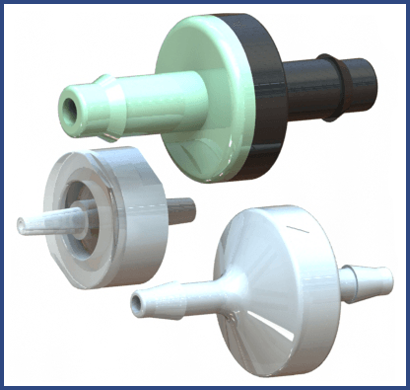
Source: Industrial Spec

Source: Indiamart
Tilting Disc Check Valve
A tilting disc check valve or a tilt check valve consists of a disc with a pivot point found on the centerline of the disc. Just like most check valves, the disc opens to provide free flow in one direction and closes when there is flow in the opposite direction.
A tilting disc is small and lightweight. Also, the center of gravity of a tilting disc is really near its pivot point. As a result, this check valve has a low cracking pressure. A cracking pressure refers to the pressure when fluid begins to leak before reaching the set pressure. A set pressure refers to the point when a PRV or pressure relief valve starts to open.
Since it has a quick-acting closure, a tilting disc check valve is ideal for pump protection. It is widely used in applications that handle liquids and gases.
Check Valve Types by Media Type

Source: eBay
Liquid Check Valve
A liquid check valve is a check valve ideal for handling different types of liquids. It functions depending on the velocity, density, viscosity, or the combination of these factors.
It is important to note that most valves are designed to handle different types of media. A check valve will be marked with WOG indicating that the valve can handle water, oil, and gas. If this is the case, the user must determine whether or not the entire make of the check valve is ideal for its application.
Gas Check Valve
A gas check valve is specially designed for gas transmission services, such as compressor discharge. A reciprocating compressor is often used to effectively transport gas over hundreds of miles through pipelines. The flow of gas must only be in one direction. A gas check valve makes sure that there is no reverse flow when transporting gas.
Other applications that use a gas check valve are pressure letdown, hydraulic lines, metering pumps, air lines, compressor inlet and outlet, and pump discharge among others.
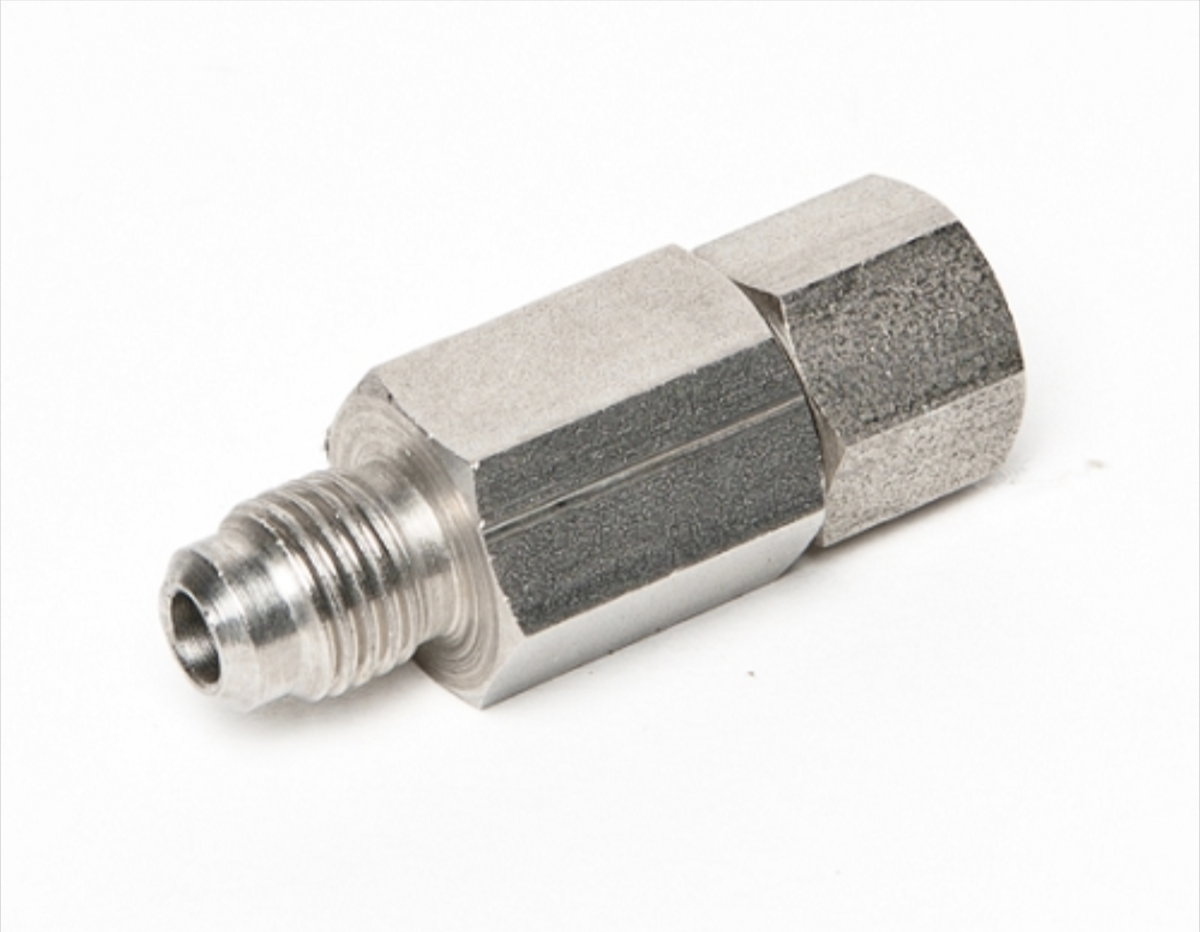
Source: Home Brewing
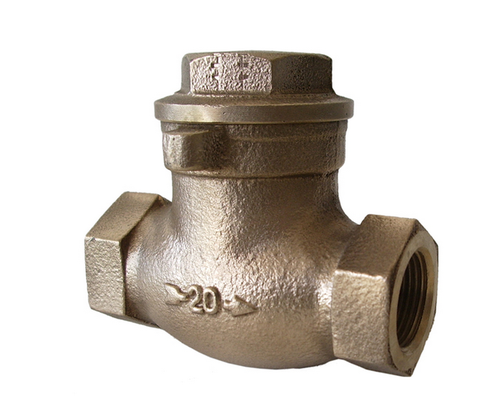
Source: Indiamart
Steam Check Valve
A steam check valve is a check valve used in chemical and industrial processes that deal with steam and condensate. Steam is extensively used to power industrial processes. However, it creates condensate, which needs to be eliminated immediately from the steam line.
Otherwise, condensate lingering in the process line can lead to water hammer and other serious problems. Leaving condensate inside the pipeline could prompt an abrupt pressure drop that could cause flashing. Flashing refers to quick liquid vaporization.
Steam traps are installed in the process system to control steam and eliminate condensate. Once these are achieved, condensate will go downstream. This is where a steam check valve comes in. It prevents reverse flow to make sure that condensate is completely removed. Apart from preventing reverse flow, a steam check valve helps reduce flashing effects.
Check Valve Types by Application
High-pressure Check Valve
A high-pressure check valve is designed to handle demanding conditions in industrial applications. Apart from high-pressure, this type of check valve can also endure high temperatures and corrosive and aggressive media.
Stainless steel is a common material used in a high-pressure check valve. However, other materials may be used depending on the requirements of the system. Some of these are forged steel, cast steel, carbon steel, cast iron, ductile iron,etc.
For positive sealing, the seat of a high-pressure check valve is made from durable materials as well. Seal options may include metal-to-metal seating, O-ring seating (Hydrogenated Nitrile Butadiene Rubber or HNBR is the standard material), and PTFE (Polytetrafluoroethylene) seating, supported by a metal-to-metal seal.

Source: Indiamart

Source: Caleffi
High-temperature Check Valve
A high-temperature check valve is specifically made to handle applications with high temperatures of 425ºC and up. It can also handle low temperatures below 0ºC. The temperature range depends on the overall make of the check valve. A high-temperature check valve is also usually designed to handle low, medium, and high pressures.
To handle such temperatures, this type of check valve is made from robust materials. These include stainless steel, cast steel, forged steel, and cast iron among others.
A forged steel check valve is used in critical services in condensate lines, process lines, thermal oil systems, and cold and hot water systems. Some of the industries that use a high-temperature check valve are process plants, steam plants, and boiler plants.
Cryogenic Check Valve
A cryogenic check valve is designed especially for cryogenic or extremely low temperatures, such as -196°C. This type of check valve can even handle temperatures that are below freezing point. It is often made from stainless steel and bronze.
To protect the stem, a cryogenic check valve is equipped with an extended bonnet. How long the bonnet will be will depend on the characteristics of the application. This feature ensures that the stem packing is away from the cryogenic fluid to maintain optimum performance.
A cryogenic check valve is widely used to handle the production of cryogenic fuels, like liquid oxygen and liquid hydrogen. It is also used in liquefied gases, like liquid helium and liquid nitrogen.
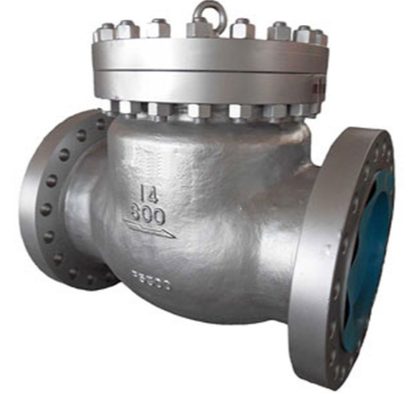
Source: Indiamart

Source: Amazon
Vacuum Check Valve
A vacuum check valve operates in a venturi vacuum pump by providing a tight seal to control vacuum levels. Just like a typical check valve, a vacuum check valve allows flow of air in a single direction.
When the vacuum pump exceeds the predetermined vacuum level, a switch closes the pump while the valve controls the level of vacuum. Meanwhile, when vacuum is below the required level, the pump will start automatically.
An ideal vacuum check valve has a cracking pressure lower than 1”Hg. This allows the valve to maintain a higher vacuum level.
Sanitary Check Valve
A sanitary check valve is specifically designed to handle applications in pharmaceutical industries. The main purpose of this check valve is to prevent reverse flow and the risks of cross-contamination.
This check valve may be equipped with a soft seat or metal seat, depending on its usage. For pure steam or condensate, a metal seat is used. Meanwhile, a soft seat is used for high-purity liquid applications

Source: Amazon
Check Valve Types by Connection
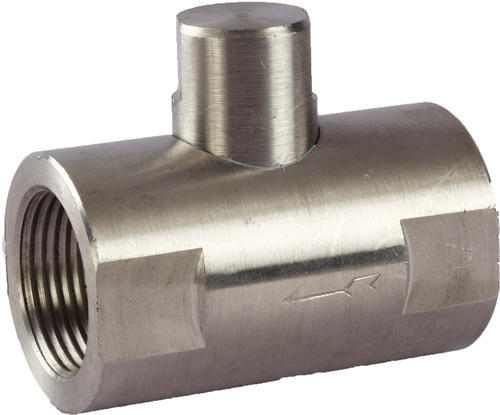
Source: Indiamart
Socket Weld Check Valve
A socket weld check valve is a check valve with socketed end connections. A socket weld is usually used when the check valve is made from steel. This type of end connection is well-suited for high-pressure and high-temperature applications. It is also used in pipes that do not need frequent disassembly. A socket weld check valve guarantees leak-proof sealing even when used excessively.
A socket weld connection is done by boring the ends of the check valve with a socket. The internal diameter must be slightly bigger than the external diameter of the pipeline. The pipe is inserted into the socket, butted against the shoulder, and joined to the check valve using a fillet weld.
Threaded Check Valve
A threaded check valve is a check valve with threaded end connections. This type of connection allows the check valve to be connected directly to the pipeline through male and female threads. The installation is easy as it does not require special skills.
As a general rule, a threaded check valve must have female threads. However, male threads may be used for certain purposes. The threads may either be tapered or parallel. This type of end connection is often used in a smaller bronze check valve.
A threaded connection provides tight sealing and is often used in low-pressure and low-temperature applications. A threaded check valve is also used in operations with little to no vibrations.

Source: Amazon

Source: Indiamart
Butt Weld Check Valve
A butt weld check valve is a check valve with end connections bevelled to meet the machined bevel and wall thickness of the pipe. After bevelling the ends of a check valve, they are then butted to the pipe and welded. This connection type is commonly used in a steel check valve as it has greater strength. It is also used in a check valve that does not require frequent dismantling.
Due to increased durability, a butt weld check valve is ideal for high-pressure and high-temperature applications. Some industries that use a butt weld check valve include oil and gas industries, water and wastewater treatment, petrochemicals, and more.
Compression Fitting Check Valve
A compression fitting check valve is made with end connections with sockets to connect with the pipe. The two are joined together through the use of a union nut. The connection is achieved by compressing a sleeve or ring to the external dimension of a plain-end pipe. A compression end check valve is generally used in steel and copper pipes. It is employed in low-pressure applications or when the pipeline does not need frequent disassembly.

Source: Amazon

Source: Indiamart
Flanged End Check Valve
A flanged end check valve is made with flanges for its end connections. A flanged connection is the easiest connection type when installing and uninstalling from a pipe. Moreover, it is the most commonly used connection in valves, particularly those that require frequent uninstalling and reinstalling. The flanges may be clamped or bolted to connect the check valve to the pipeline.
Check Valve Types by Body Design

Source: Indiamart
Angle Check Valve
An angle check valve is quite similar to an angle type globe valve when it comes to the outside features. An angle type globe valve controls the flow of fluid, while an angle check valve makes sure that process media only flows in one direction.
An angle check valve is designed in a way that the axes of the entry and exit of media flow make a perpendicular intersection. Generally, the horizontal line is the entryway, while the vertical line serves as the exit for media flow.
The structure of this valve type lets slurry and other viscous fluids to go through the check valve easily. Moreover, it helps prevent the check valve from getting damaged as a result of flashing and fluid cavitation.
Due to these features, an angle check valve is often used in water and wastewater treatment facilities, oil and gas industries, and food and beverage industries.
Wye Check Valve / Y-Check Valve
A wye check valve has a similar body structure of a Y-type globe valve. The stem and seat are angled at 45°C to the axis of the pipe. This type of check valve is used in demanding applications such as high pressure and high temperature. It is also used in services where the pressure drop is not a major concern.
Better known as a Y-check valve, it is widely used in compressed air or liquid systems to permit flow in a single direction. It is used in various types of media, such as freshwater, seawater, condensate, boiler feedwater, cargo oil, lubricating oil, fuel oil, flammable and non-flammable hydraulic fluid, and more.
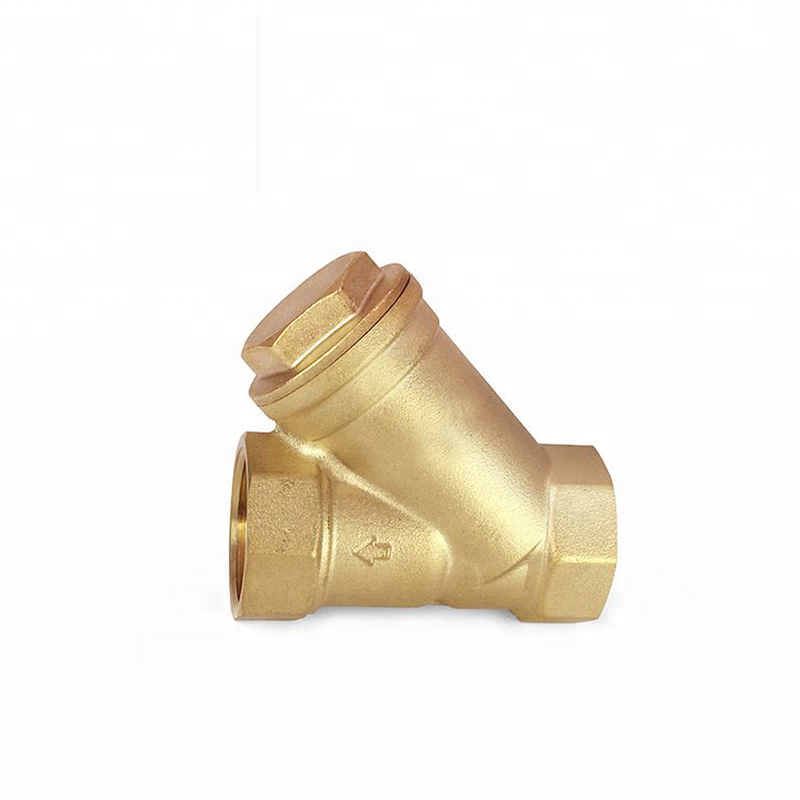
Source: Alibaba
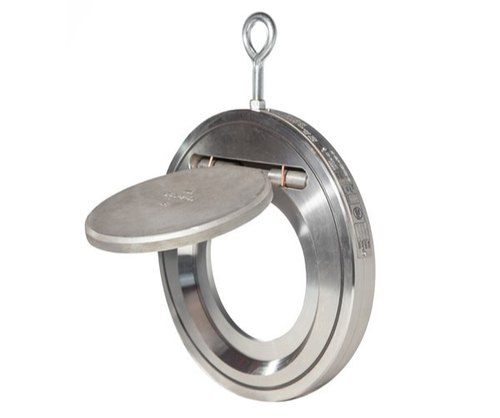
Source: Indiamart
Wafer Check Valve / Dual-plate Check Valve
A wafer check valve or dual-plate check valve is made of a strong thermoplastic body with a wafer design. The body, which mainly consists of the seat and disc, performs the function of the valve.
The flow from one direction raises the disc from the seat to allow fluid to flow freely. Meanwhile, the flow from the opposite direction prompts the disc to move back to the seat. This creates a tight seal preventing the risk of backflow.
A wafer check valve has a slim design that greatly reduces the chances of clogging. This means it is well-fitted for services that deal with large solids and debris. It is commonly used in operations where fluid flowing in one direction is utterly important.
What Are the Applications That Use a Check Valve?
1. Industrial Processes

Check valves play an essential role in many industrial applications. They are extensively used in various parts of machines of power plants, chemical plants, and other industrial processes.
Common applications that use check valves in nuclear industries are dump lines, water control systems, N2 systems, make-up water, sampling and monitoring systems, and miscellaneous process systems.
In aerospace and aircraft operations, check valves are used where there are corrosive and aggressive fluids, extreme temperatures, and high vibration levels.
Check valves are also employed when various gases are combined into a single gas stream. Check valves are installed into each gas stream to prevent the gases from mixing into the source. For instance, if an oxidizer and fuel need to be combined, check valves are installed on both oxidizer and fuel sources. This is to make sure that the original gas containers stay pure and non-flammable.
2. Pumps
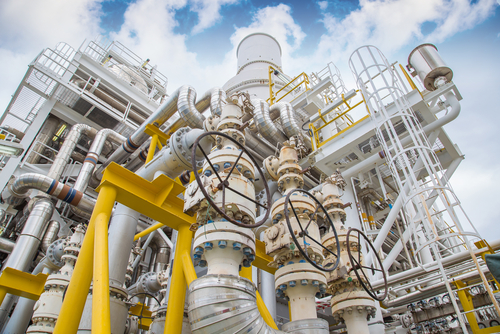
Check valves are also used in certain types of pumps. Diaphragm and piston-driven pumps, such as chromatography pumps and metering pumps, typically use ball check valves. Also, various types of machinery that has a similar mechanism with these pumps use check valves to prevent backflow.
3. Pipelines
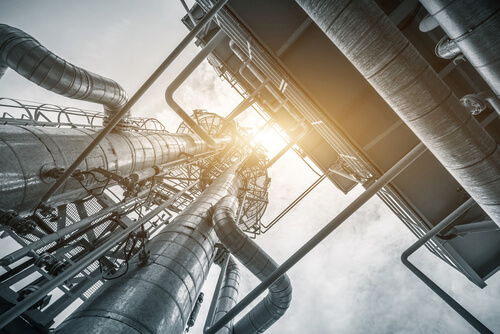
Check valves are crucial in pipelines to ensure the integrity of the final product. Pipelines are employed in thousands of miles to transport media from its original source to its final destination where it will be changed into its finished state.
Types of media that are often used in these pipelines are crude oil and gas. Check valves are installed in the upstream and downstream lines and in midstream sections. This is to ensure that there is no backflow or contamination that could affect the quality of the flow media.
4. Oil and Gas Industries
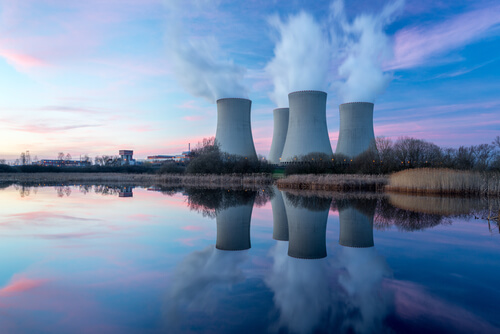
Due to the increasing demand for oil and gas, longer pipelines, deeper wells, and even lower production costs have become essential. Apart from requiring inexpensive industrial valves, machinery must be tough, perform better, and have a longer service life. All of these are necessary to meet the growing demands of these industries.
In addition to these requirements, strong and reliable check valves are needed. These valves ensure that operations run smoothly. Even the slightest contamination can affect the overall integrity of the media flow. If this happens, it will be really costly for companies. Moreover, preventing backflow and contamination help in extending the service lives of the valves.
Check valves used in the oil and gas industries must have operating conditions capable of handling extremely high pressures and temperatures, extremely low pressures, and cryogenic conditions.
5. Chemical Processing and Biopharm Industries

Chemical process and biopharm industries require check valves that can be sterilized. The main purpose of these industries is to process raw materials into finished products. Since these industries often involve reactions using heat and pressure, the media used might be toxic, abrasive, and corrosive. Check valves should have high tolerance to these types of flow. They should also ensure tight sealing to prevent backflow and cross-contamination.
6. Food and Beverage Industries

Food and beverage industries are large industries that continue to grow today. As a result, these industries have a growing need for strong and reliable check valves in their plants.
Check valves used in these industries have two classifications – valves that are in direct contact with materials and those operating in utility services, such as water and steam. For check valves that handle food materials, there are special requirements that need to be observed. For instance, the check valves should be smooth to prevent particles from getting suspended into the valve that might cause contamination.
In food and beverage industries, check valves don’t typically handle high pressures and corrosive substances that are usually present in other industrial applications.
7. Marine Industries

In general, industrial valves play a crucial role in marine industries. Ships today are generally bigger and used more often. This means that ships have more requirements to function optimally and reliably. Valves are used to create power, control HVAC, manage wastewater, and other important services.
Check valves are used in ships that store and transport liquid cargo. They are required to make sure that the flow of liquid goes in one direction. This is to prevent the flow from going in any other direction that could lead to contamination and other problems.
Check valves used in marine industries require enhanced durability and must be reliable since resources are limited and not available when already at sea.
8. Wastewater Treatment Plants
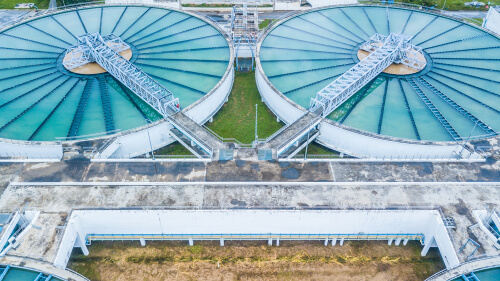
Wastewater treatment plants are facilities that handle different types of processes to treat industrial water and eliminate pollutants. Some of these processes are chemical, biological, and physical.
Wastewater disposal from industrial plants is a challenging and expensive problem. Most chemical and petrochemical plants and petroleum refineries have their own facilities to treat wastewater. This is for them to comply with local and national regulations. As a result, these industries make sure that their wastewater treatment facilities are functioning well. This is to prevent unnecessary costs and additional problems.
Check valves are used in these facilities for a number of reasons. Aside from preventing backflow of treated water, check valves protect pieces of equipment that may be affected by backflow. They also reduce the risks of contamination in various processes. Some check valves also help prevent the sudden surge of pressure, such as water hammer.
Contact Our Experts
Send us a message if you have any questions or request a quote.We Offer:
- A reply from our experts within 24 hours
- The latest detailed product catalugue
- One-stop service for your project
